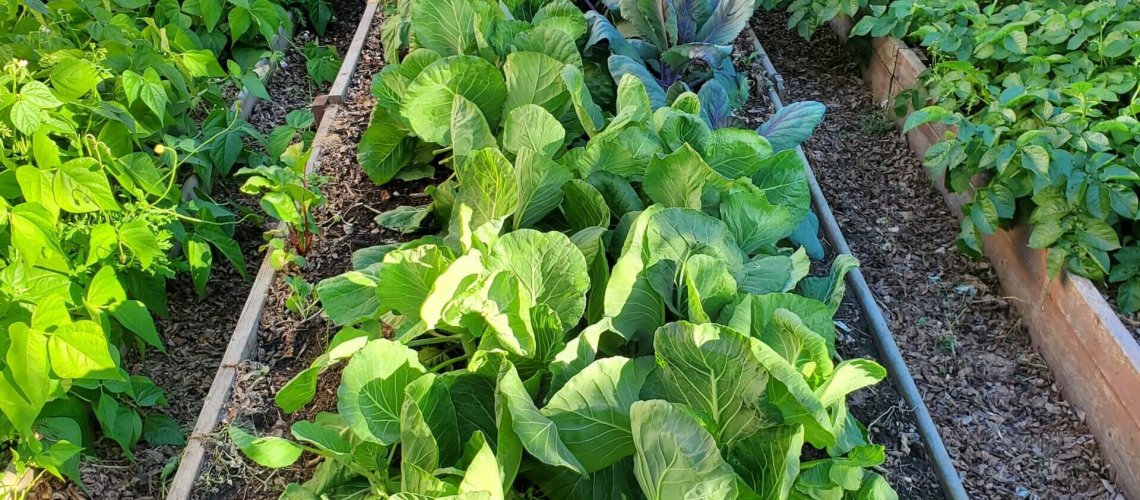A keen, young District Agriculturist was talking to an old farmer about some new ways of increasing his yield. After a while, the farmer said, “Sonny, I already knows how to farm better than I can. I just don’t have the time.”
So, start small, and over the years and you will find the time.
This year I learned the effects of a heatwave, temperatures up to 380C and probably higher on the west wall of my house where I grow many of my tomatoes. Tomato flowers are bi-sexual, having male and female organs. However, in high heat, the tomato blossoms won’t open and the pollen is destroyed. No fruit until the plants recover. My Black Russian tomatoes recovered quickly, while my Manitoba tomatoes took 6 weeks before they started to grow again. Varieties in cooler areas recovered faster.
Raspberries also have bi-sexual flowers; they did poorly this year because of the heat.
It was not only hot, it was a dry summer. Squash, cucumber, cabbage, broccoli, rutabaga, and tomatoes did well because I watered through a can with holes in the bottom inserted into the ground near each plant. I planted a new variety of squash, Gold Nugget, a bush squash that yielded over 20 softball-size squash from two mounds. I picked the first in late July. In spite of the heat, watering cans, and a trellis, I only got one butternut squash.
I did not insert the cans for potatoes and their yield was about 30% of a normal year. A friend who watered properly had his best crop ever.
Before transplanting tomato and pepper seedlings, I placed some pulverized eggshells and a handful of bone meal in the hole and mixed them in the soil so as to protect the tender rootlets. Eggshells provide calcium that prevents blossom rot; bone meal promotes vigorous growth.
The main reason for pruning tomatoes is it allows the plant to place its energy into developing the fruit rather than maintaining its leaves. Flowers and a sucker appear at the junction of each leaf branch and the main stem. Snip off these suckers. The result is a stem with lots of fruit, some leaves along the stem, and lots of leaves at the top.
One benefit of the heat was the absence of slugs. Don’t get complacent, if next year is wet, they will return.
My new bee hotel has a few guests. They will be the solitary bees, mason, digger, cuckoo, miner, masked, and leafcutter bees. They come out earlier than the honey bees, pollinating the early flowers and hopefully my plum tree. Hopefully, they will do their magic next year. Bumblebee queens hibernate underground and are the first ones out.
In my gardening to-do list, I have 23 entries, all based on observations recorded in my gardening log. They include repairs to two of my raised beds, revised dates to starting my seedlings and increasing the number of vertical structures and trellises. In the coming year, I plan to redo my perennial garden to ensure flowering in all parts at all times. I also plan to incorporate more edible vegetables in my perennial garden plots. For example, a border of carrots and marigolds, or multi-colored Swiss Chard. I also have a new raised bed prepared for my strawberries and blueberry bushes. Next year, I will only grow Gold Nugget squash.
Biochar is a soil amendment that increases the retention of water, attracts elements from the air, and benefits soil organisms. I am doing a comparison on its efficacy in increasing vegetable production. I have applied biochar to half of each of my four 20-foot-long raised beds. When the vegetables have been harvested, I will weigh the produce and compare the one half in each raised bed with the other.
As you can see, there is always something new to do. Merry Christmas and Happy Holidays. I’ll see you in print in the New Year.

Recent Comments